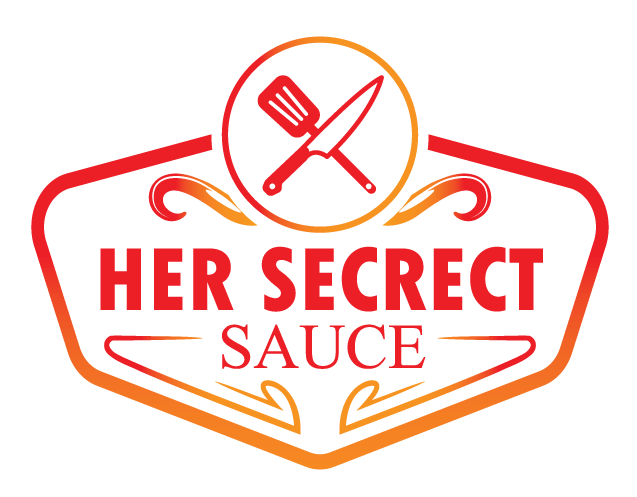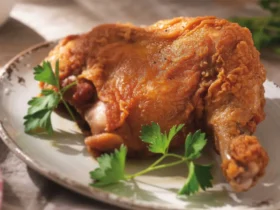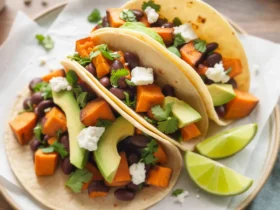“`html
There’s something about vanilla cake that feels like a final exam in baking. Chocolate can hide a lot of mistakes, but vanilla? It’s pure, simple, and has absolutely nowhere to hide.
My first few attempts at a “perfect” vanilla cake were basically sweet doorstops. They were either dry, bland, or had the texture of a kitchen sponge. It was frustrating.
So, I went on a mission. A quest, if you will. To create a vanilla cake that was actually worth the effort. One that was moist, packed with real vanilla flavor, and had a soft, tender crumb.
This is that cake. It’s not complicated. It’s not fussy. But it is, in my very humble opinion, the only vanilla cake recipe you’ll ever need. It’s the one I make for birthdays, for Tuesdays, and for when I just need something that feels like a hug in dessert form.
What You’ll Need
We’re splitting this into two parts: the cake itself and the ridiculously good vanilla buttercream. Don’t let the list scare you; it’s mostly pantry staples.
For the Vanilla Cake:
- Cake Flour: 2 ½ cups. Don’t skip this, it’s key for a soft texture.
- Baking Powder: 2 ¼ teaspoons
- Baking Soda: ½ teaspoon
- Salt: ¾ teaspoon
- Unsalted Butter: 1 cup (2 sticks), softened to room temperature.
- Granulated Sugar: 1 ¾ cups
- Eggs: 3 large, at room temperature.
- Vanilla Extract: 1 tablespoon. Yes, a whole tablespoon. Use the good stuff.
- Buttermilk: 1 cup, at room temperature.
For the Vanilla Buttercream:
- Unsalted Butter: 1 ½ cups (3 sticks), softened to room temperature.
- Powdered Sugar: 4 cups, sifted.
- Heavy Cream: ¼ to ⅓ cup
- Vanilla Extract: 2 teaspoons
- Salt: ¼ teaspoon
Pro Tips
Over the years of making (and messing up) this cake, I’ve picked up a few things. These are the little details that make a huge difference.
- Room Temperature is Not a Suggestion. I know, it’s annoying to wait. But when your butter, eggs, and buttermilk are at room temp, they form a smooth emulsion. This traps air in the batter, which creates a fluffy, light cake instead of a dense, oily one.
- The “Reverse Creaming” Method. Instead of creaming butter and sugar first, we’re mixing the dry ingredients with the butter before adding the wet. This coats the flour in fat, which inhibits gluten development. Translation: it’s a nearly foolproof way to get an incredibly tender, melt-in-your-mouth crumb.
- Don’t Open That Oven Door. Every time you peek, the oven temperature plummets. This sudden drop can cause your beautiful rising cake to sink in the middle. Use the oven light to check on it, and only open the door when you’re ready to test for doneness with a toothpick.
- Sift Your Powdered Sugar. For the frosting, this is a must. Powdered sugar gets clumpy, and no amount of beating will get those little lumps out. Sifting gives you a silky-smooth buttercream every single time.
Tools Required
You don’t need a professional kitchen, just a few basics.
- Two 9-inch round cake pans
- Parchment paper
- Electric mixer (stand or hand mixer)
- Mixing bowls
- Whisk
- Spatula
- Wire cooling rack
- Sifter or fine-mesh sieve
The Step-by-Step Guide to Your Vanilla Dream Cake
Alright, let’s get to it. Just follow these steps, and you’ll be golden.
Part 1: Making the Cake Layers
Step 1: Preheat your oven to 350°F (175°C). Grease and flour two 9-inch cake pans. I also like to line the bottom with a circle of parchment paper to guarantee the cakes come out cleanly.
Step 2: In a large bowl (or the bowl of your stand mixer), whisk together the cake flour, sugar, baking powder, baking soda, and salt. Give it a good mix to make sure everything is evenly distributed.
Step 3: Add the softened butter to the dry ingredients. Mix on low speed until the mixture looks like coarse sand. This is that reverse creaming method I was talking about. Honestly, it’s a game-changer.
Step 4: In a separate medium bowl, whisk together the room temperature eggs, buttermilk, and vanilla extract until just combined.
Step 5: Pour half of the wet ingredients into the flour-butter mixture. Mix on low until just combined, then increase the speed to medium and beat for about a minute. This helps build the cake’s structure.
Step 6: Scrape down the sides of the bowl with a spatula. Add the remaining wet ingredients and mix on low until just combined. Be careful not to overmix here; a few lumps are okay. Overmixing develops gluten and makes the cake tough.
Step 7: Divide the batter evenly between your two prepared pans. Bake for 30-35 minutes, or until a toothpick inserted into the center comes out clean. The cake tops should spring back when you gently press them.
Step 8: Let the cakes cool in the pans on a wire rack for about 15 minutes. Then, carefully run a knife around the edges and invert them onto the rack to cool completely. And I mean completely. Frosting a warm cake is a recipe for a soupy, sliding disaster. Trust me on this.
Part 2: Whipping Up the Buttercream
Step 1: In a large bowl, beat the softened butter with your electric mixer on medium-high speed for about 3-4 minutes until it’s super light and fluffy. This step incorporates air and makes for a less dense frosting.
Step 2: Turn the mixer to low and gradually add the sifted powdered sugar. Once it’s mostly incorporated, add the vanilla and salt.
Step 3: Add the heavy cream, starting with ¼ cup. Increase the speed to medium-high and beat for another 2-3 minutes until the frosting is incredibly smooth and creamy. If it’s too thick, add another tablespoon of cream until you reach your desired consistency.
Part 3: Assembly
Step 1: Place one cooled cake layer on your serving plate or cake stand. Top it with a generous layer of frosting (about 1 to 1 ½ cups) and spread it evenly.
Step 2: Place the second cake layer on top. Use the remaining frosting to cover the top and sides of the cake. You can go for a smooth, clean look or make pretty swirls with the back of a spoon.
Possible Substitutions and Variations
Sometimes you don’t have exactly what’s on the list. Here are a few swaps that work well.
| Ingredient | Substitution | Notes |
|---|---|---|
| Buttermilk | DIY Buttermilk | 1 Tbsp lemon juice in 1 cup milk. Let sit 5 mins. |
| Cake Flour | DIY Cake Flour | For each cup, use 2 Tbsp cornstarch and fill rest with AP flour. |
| Vanilla Extract | Almond Extract | Use only ½ tsp almond extract for a different flavor profile. |
For variations, try adding the zest of one lemon to the batter for a bright, fresh flavor, or fold in ¾ cup of rainbow sprinkles at the very end for a funfetti version.
Nutritional Info and Meal Pairings
Let’s be real, this is a celebration cake, not a health food. But for those who are curious, here’s a general idea. Note that this is an estimate and can vary.
| Nutrient (per slice) | Approximate Value |
|---|---|
| Calories | 550 kcal |
| Fat | 30g |
| Carbohydrates | 65g |
| Protein | 5g |
Dietary Swaps: For a dairy-free version, use a high-quality plant-based butter substitute and a dairy-free milk alternative (like almond or soy milk) for the buttermilk hack. For gluten-free, a 1:1 gluten-free baking flour blend can work, but the texture might be slightly different.
Meal Pairings: This cake is perfect on its own, but it’s amazing with a scoop of vanilla bean ice cream or a side of fresh berries to cut through the richness. A simple cup of black coffee or tea is also a classic companion.
Tips for Leftovers and Storage
If you somehow have leftovers, you’ll want to protect them. Cake’s biggest enemy is air.
Store the cake in an airtight container at room temperature for up to 3 days. The fridge can dry out the cake crumb, so I only recommend it if your kitchen is very warm.
For longer storage, you can freeze individual slices. Wrap them tightly in plastic wrap, then foil, and they’ll be good for up to 2 months. Just let them thaw at room temp before enjoying.
Frequently Asked Questions
Q1. Why did my cake sink in the middle?
Ans: This is usually caused by two things: opening the oven door too early, which causes a drastic temperature change, or underbaking. Make sure a toothpick comes out completely clean from the center before you pull it from the oven.
Q2. Can I use all-purpose flour instead of cake flour?
Ans: You can, but the texture will be a bit denser and not as soft. Cake flour has a lower protein content, which is what gives this cake its signature delicate crumb. If you must, use the DIY cake flour trick listed in the substitutions section.
Q3. My frosting is too sweet/runny. How can I fix it?
Ans: If it’s too sweet, a pinch more salt can help balance it out. If it’s too runny, the butter was likely too soft, or you added too much liquid. You can fix this by adding more sifted powdered sugar, a little at a time, until it thickens up. You can also chill it in the fridge for 15-20 minutes to help it firm up.
Q4. Can I make this recipe into cupcakes?
Ans: Absolutely. This recipe will make about 24 cupcakes. Line a muffin tin with paper liners, fill them about ⅔ full, and bake for 18-22 minutes at 350°F (175°C).
Wrapping Up
So there you have it. A vanilla cake that is genuinely a dream to eat. It’s moist, flavorful, and so much easier to make than you might think.
Baking should be fun, not stressful. This recipe is designed to give you a perfect result and a huge confidence boost. It’s a reminder that sometimes the simplest things are the most wonderful.
I really hope you give this a try. If you do, I would love to hear about it. Drop a comment below and let me know how it turned out, or if you have any questions. Go make something amazing.
“`







Leave a Reply